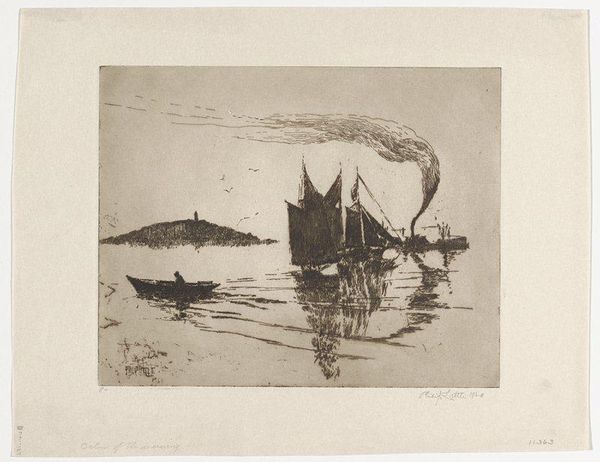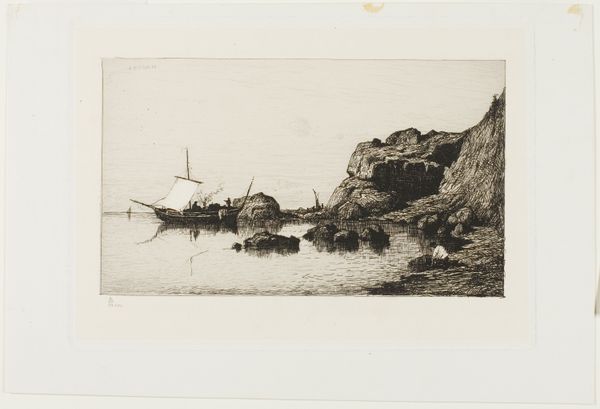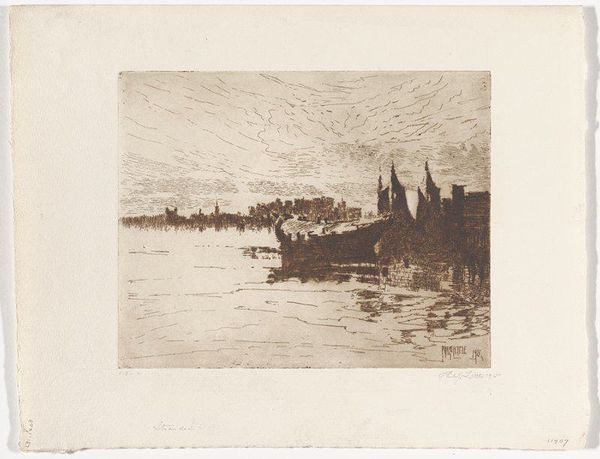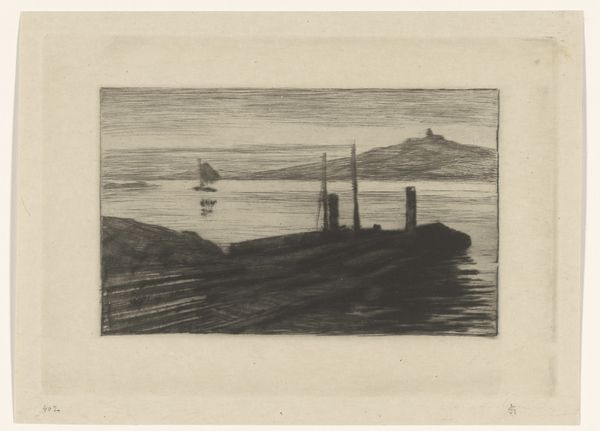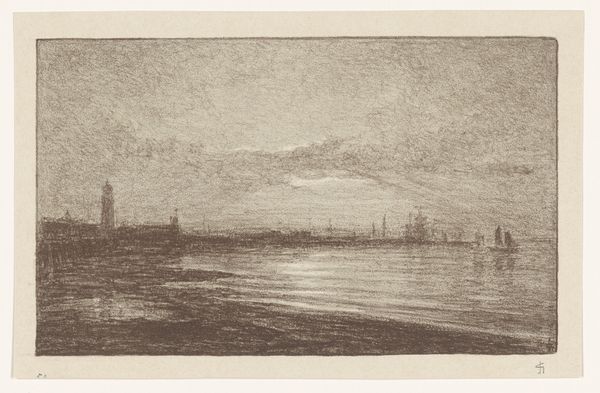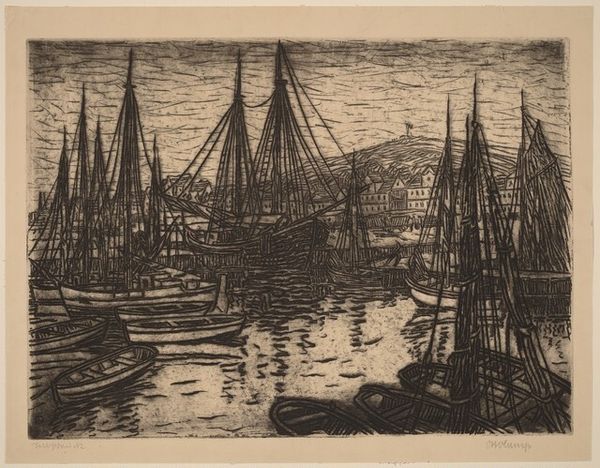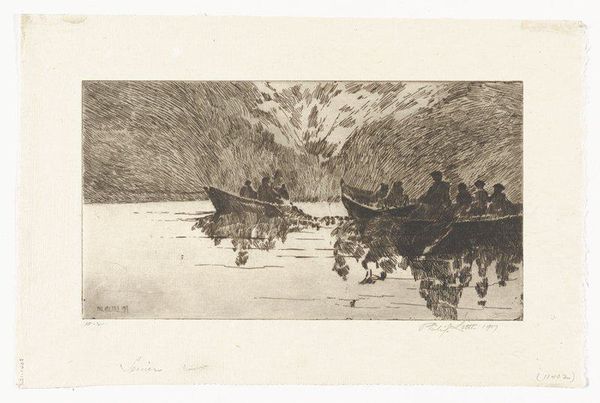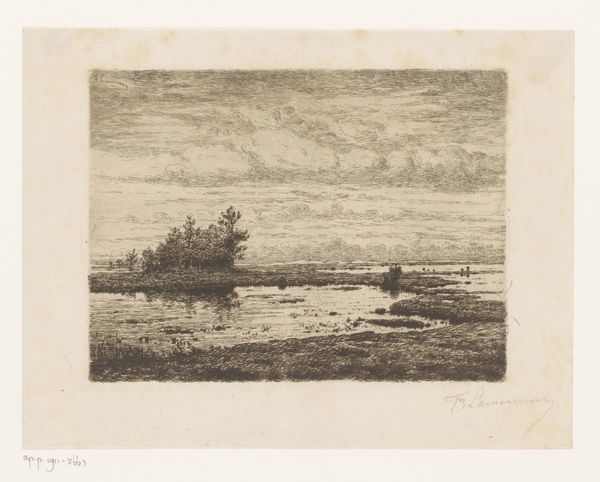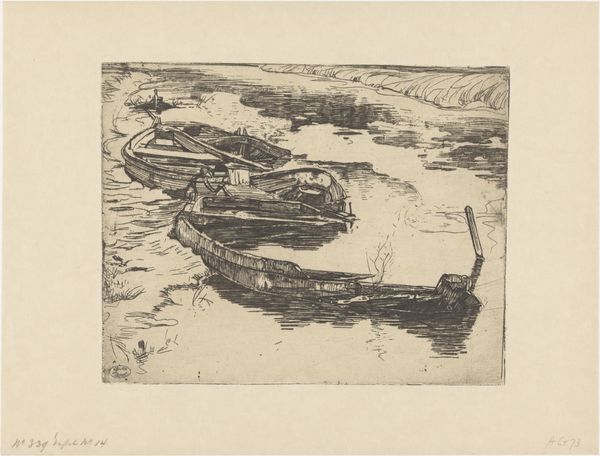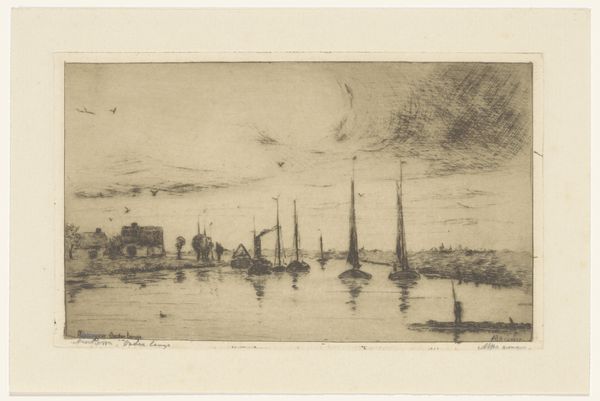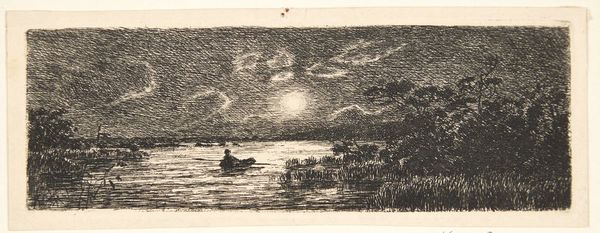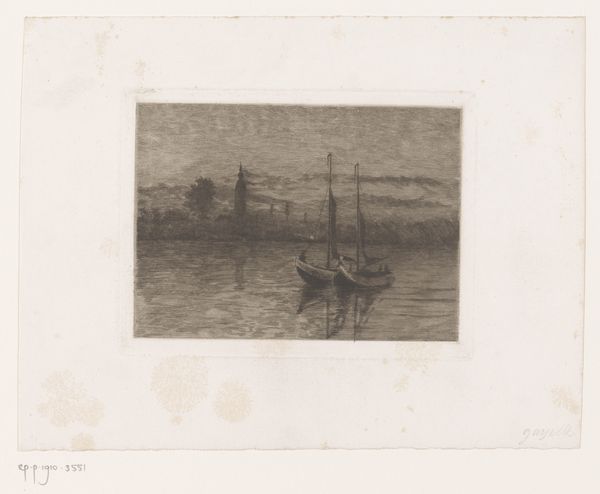
Dimensions: 9 7/8 x 11 15/16 in. (25.08 x 30.32 cm) (plate)13 1/2 x 17 1/4 in. (34.29 x 43.82 cm) (sheet)
Copyright: No Copyright - United States
Editor: This is Philip Little's etching, "Seining at Dawn," from 1915, currently housed at the Minneapolis Institute of Art. It's an evocative image, filled with a certain… melancholy. The boats are small and filled with figures, yet almost swallowed by the vastness of the sea and sky. What resonates with you in this piece? Curator: The emotional weight is palpable, isn’t it? Notice how Little uses the etching technique to create a dreamlike, almost fading quality. The light isn’t just illuminating the scene; it’s evoking a memory. What do you think the act of "seining" itself – drawing a net – represents here? Consider its historical context; the early 20th century, the dawn of industrialization slowly encroaching upon traditional ways of life. Editor: It does seem to depict a life in transition, holding onto the old while the new emerges. The men working together, yet so small against the landscape... like cogs in a larger machine. Curator: Exactly. And consider the visual language – the dark, almost claustrophobic shores versus the vast, open water. The silhouetted figures in the boats… they’re participating in an age-old ritual, a hunt, but are they masters of their fate, or are they also caught in a net? What about the tall ship? Editor: I hadn’t really thought about the ship as an element of transition. Maybe, its looming presence is symbolic, representing progress, but also overshadowing the simple lives of the fishermen. Curator: Perhaps. Or perhaps it's more complex. What might the persistence of traditional imagery suggest? A resistance to, or negotiation of, modern change? These symbolic readings open avenues for thought. Editor: I’m seeing so much more depth now. Thank you! I originally saw just melancholy, but now I realize the work portrays the tension and negotiation between past, present, and future. Curator: It's a beautiful demonstration of how a single image, carefully considered, can reveal layers of cultural memory and meaning.
Comments
No comments
Be the first to comment and join the conversation on the ultimate creative platform.
